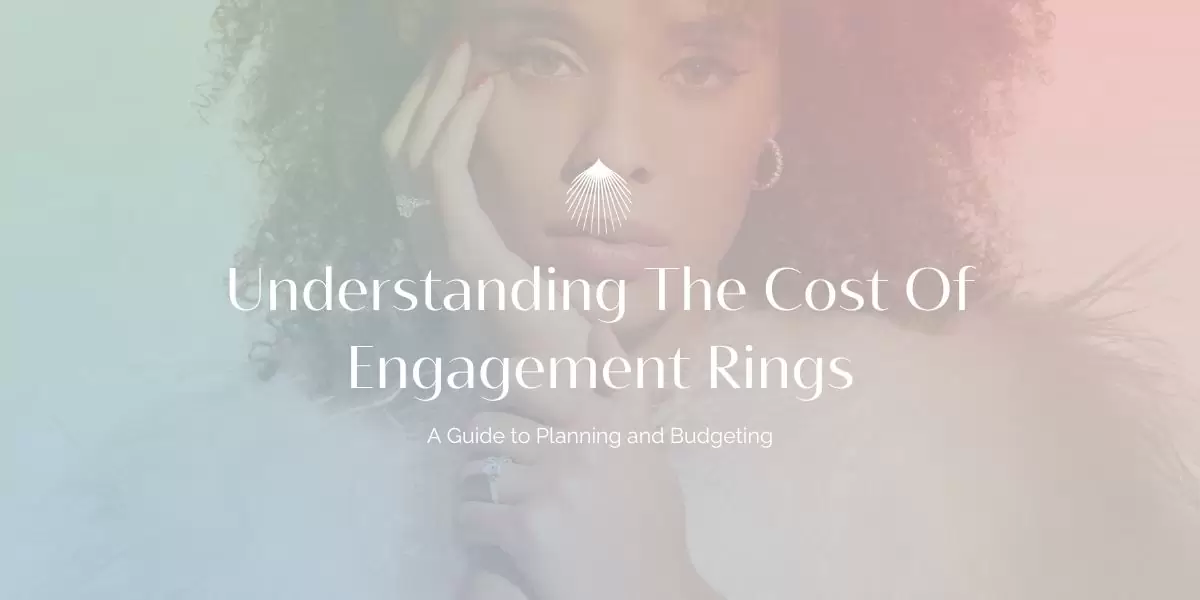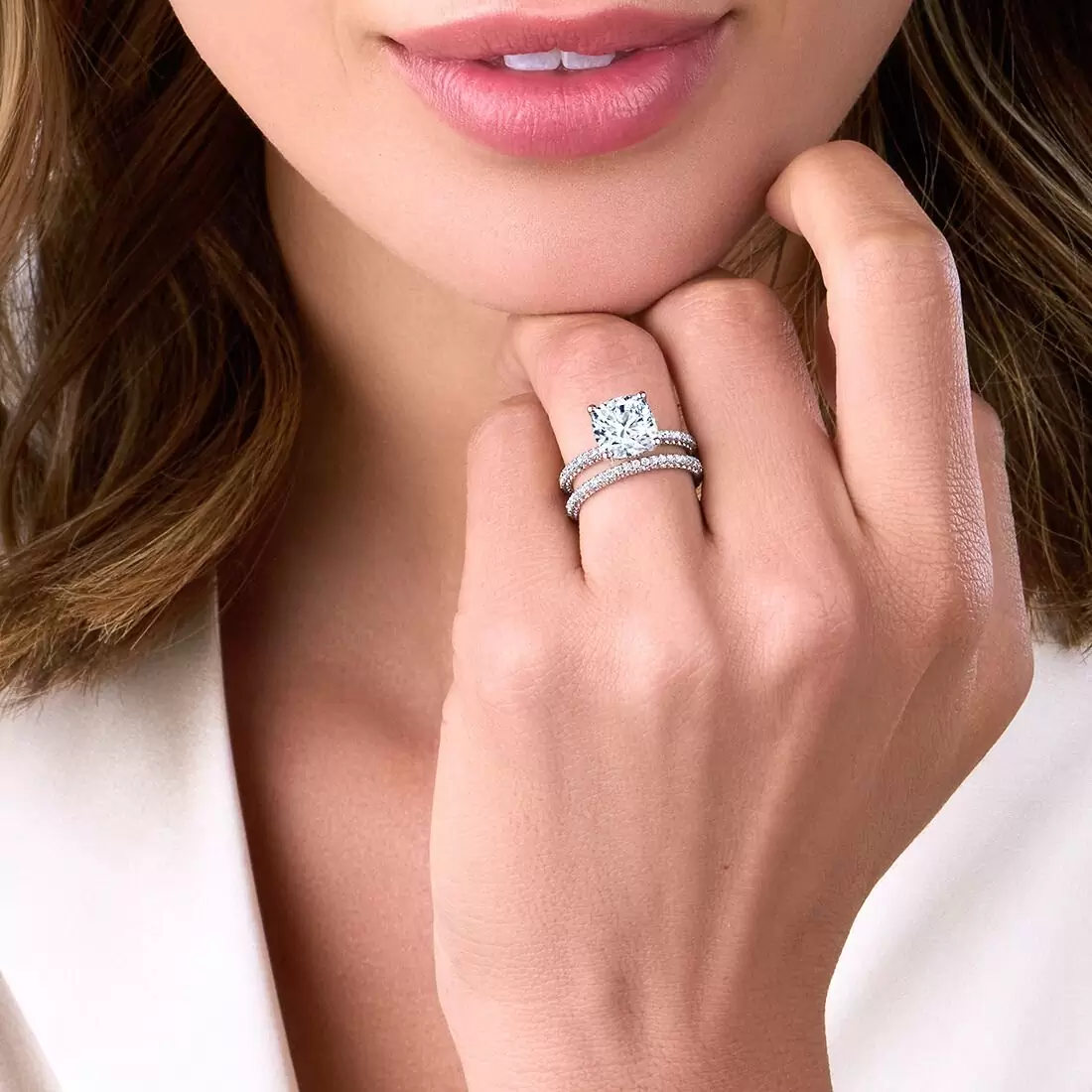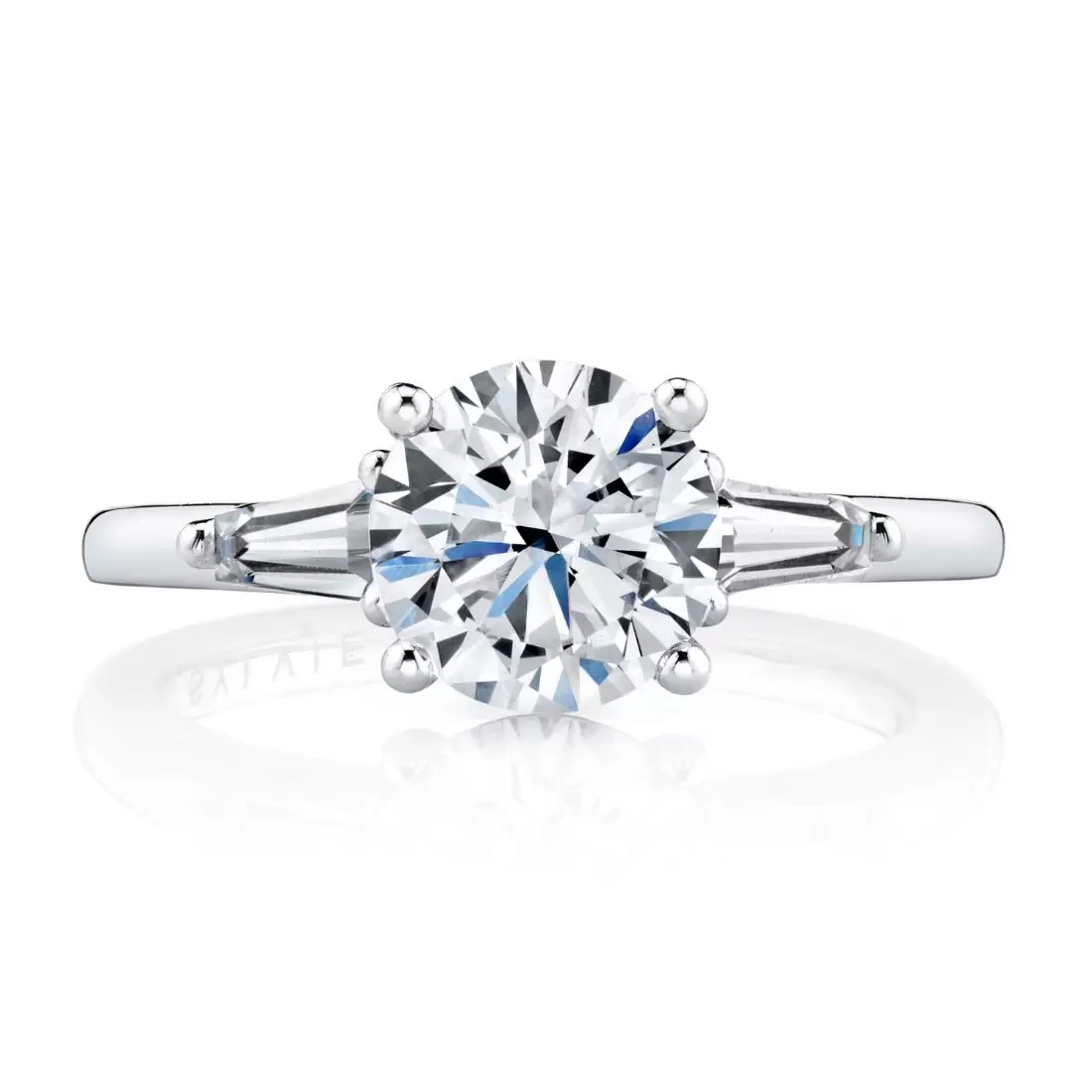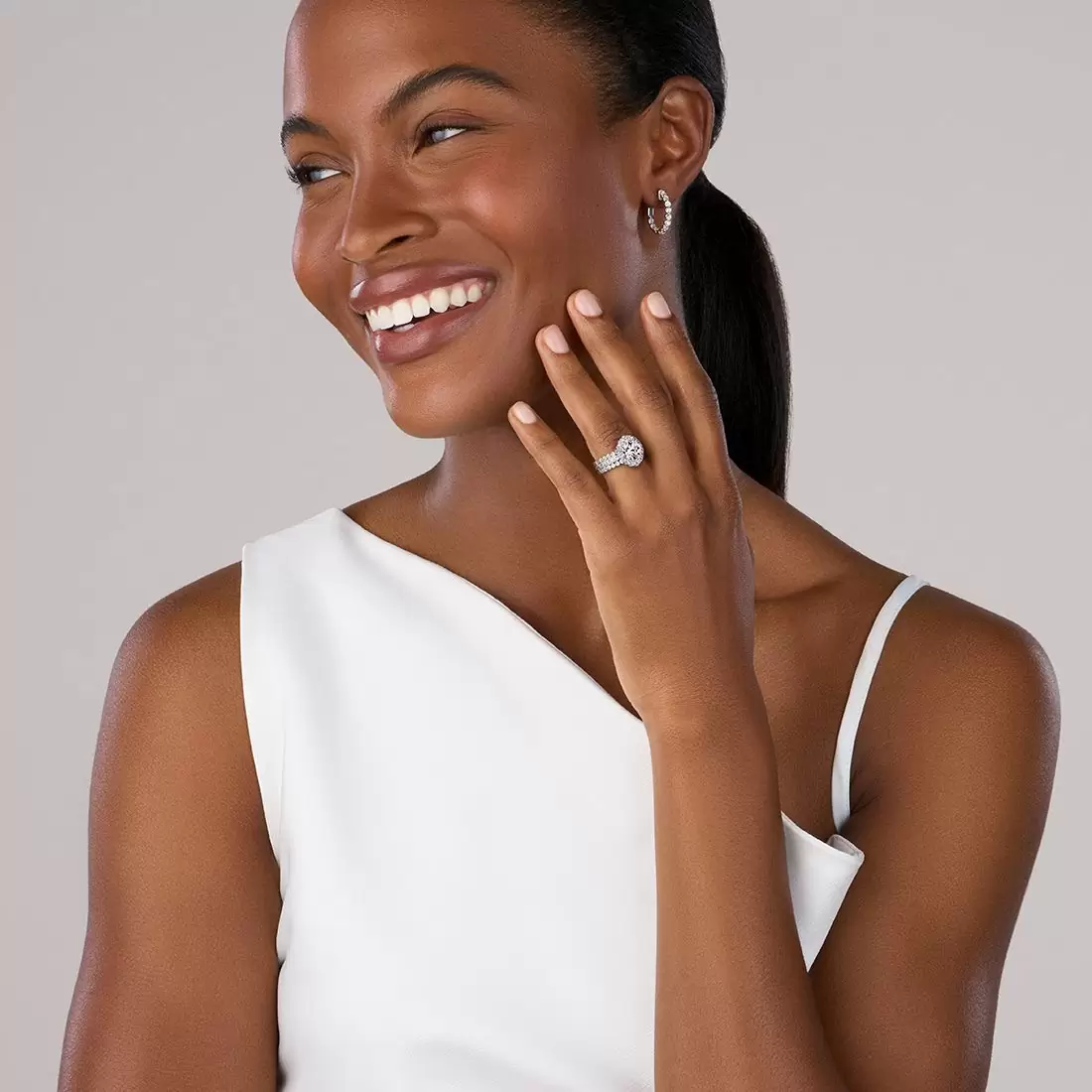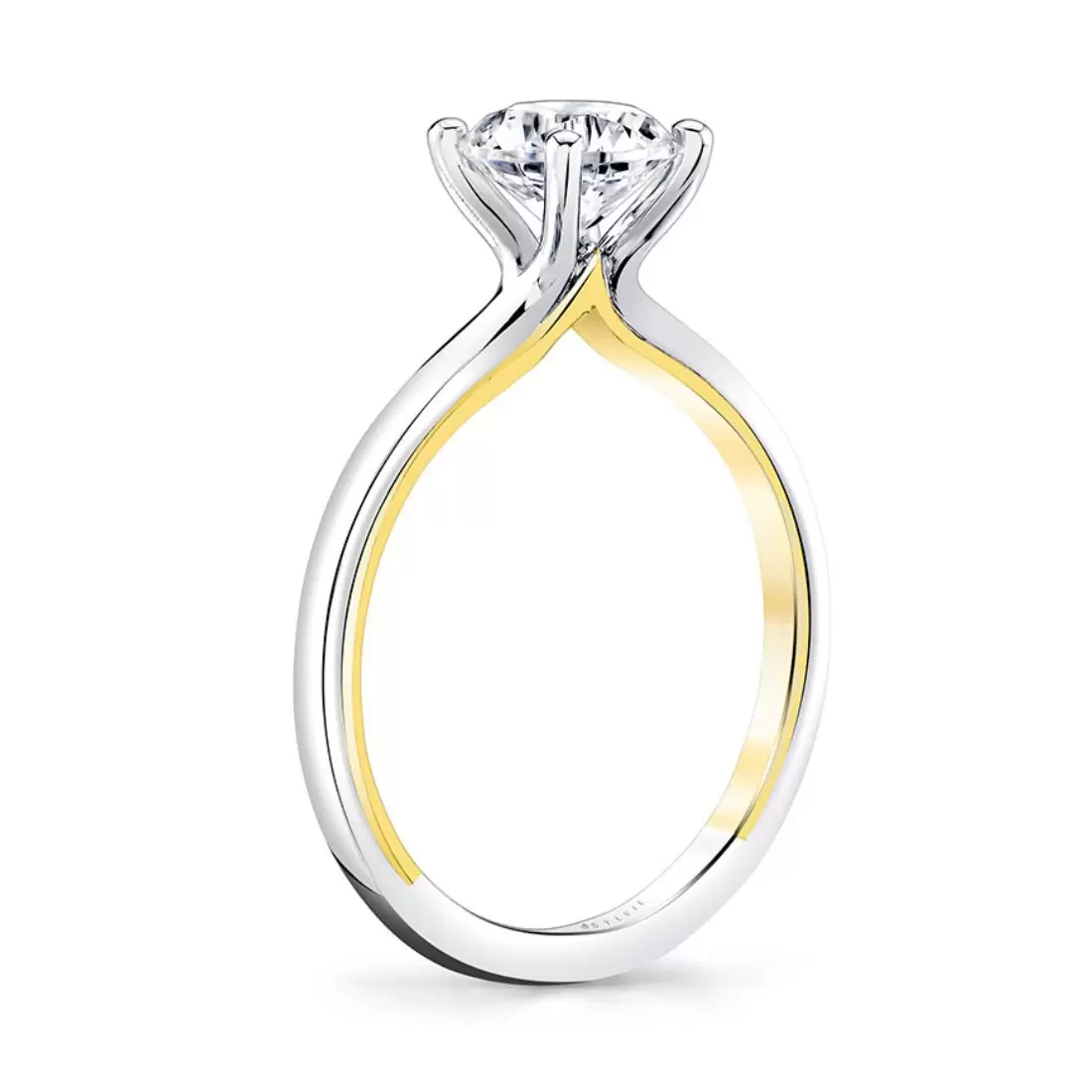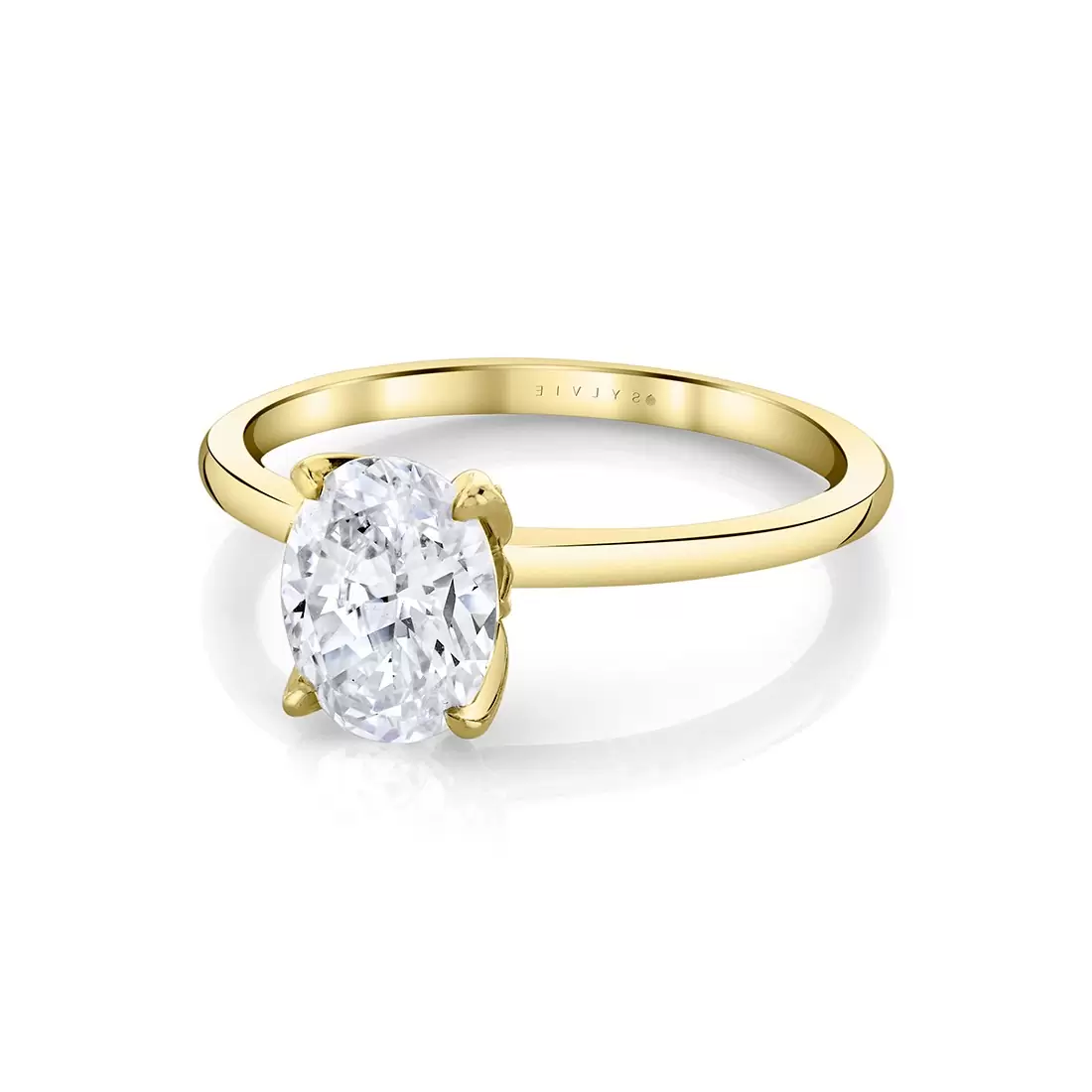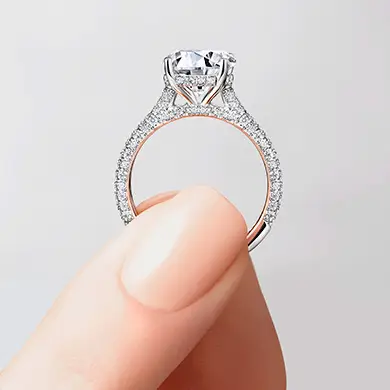Purchasing an engagement ring is a deeply romantic gesture as well as a significant financial decision. The choice of an engagement ring not only embodies profound emotional importance, it also is one of the first big purchases that is made in adult life. If you’re considering purchasing an engagement ring, you should gain a clear understanding of everything involved. This will ensure they make a well-informed decision that balances personal significance with financial practicality. This blog discusses everything you need to know. From the nuances of diamond quality and carat weight to choices in metal and design intricacies, each component critically shapes the overall cost of an engagement ring.
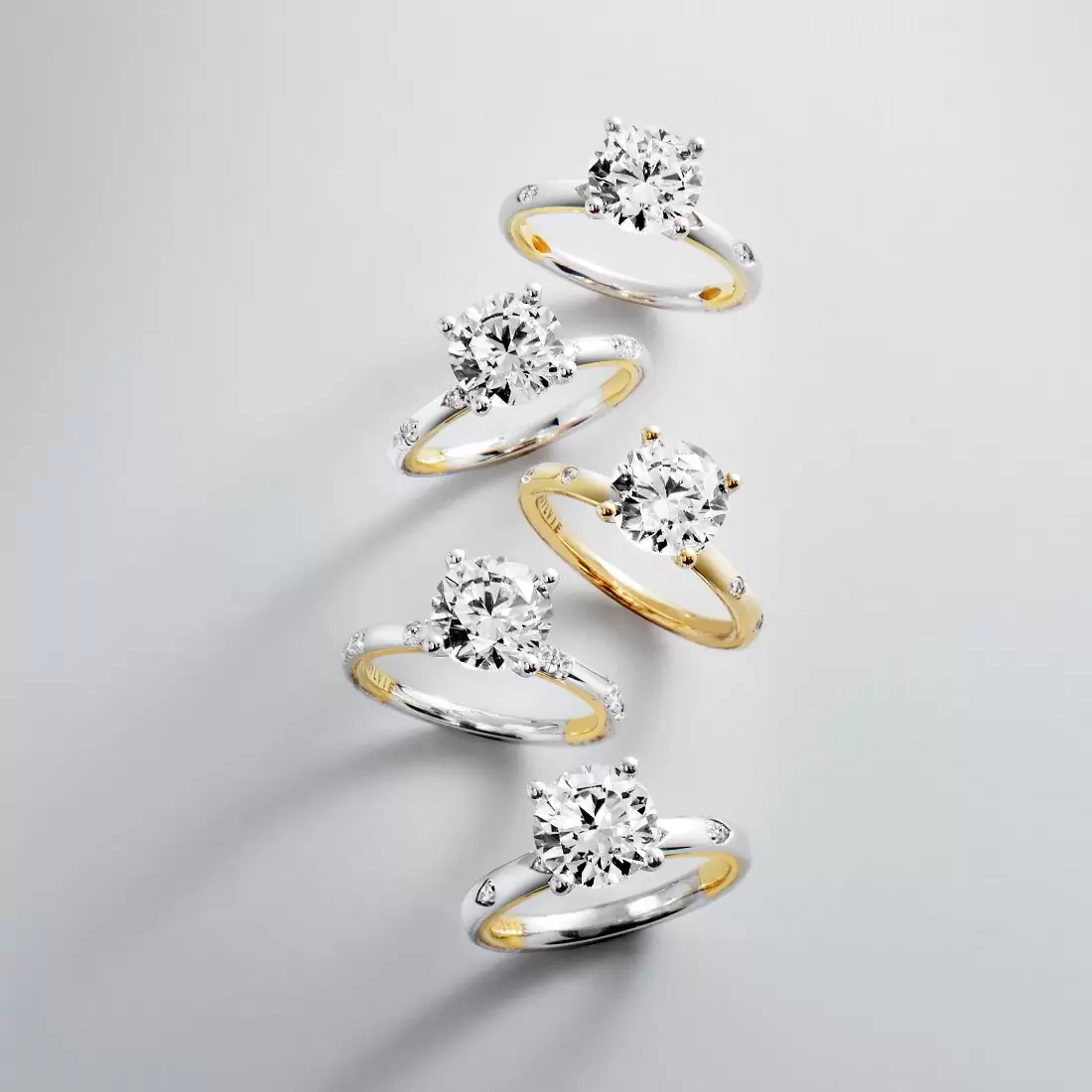
(from top to bottom) Iconelle Flush Set Marquise Two Tone Engagement Ring – Lydia, Iconelle Two Tone Shell Flush Set Engagement Ring – Anya, Iconelle Flush Set Round Engagement Ring – Sedona, Iconelle Two Tone Shell Flush Set Engagement Ring – Indie, and Iconelle Two Tone Flush Set Pear Engagement Ring – Drew
The Basics of Engagement Ring Pricing
Understanding the financial aspects of purchasing an engagement ring is essential for anyone preparing to make this significant investment. You will need to consider:
- The typical costs involved
- How these costs align with expectations and reality
What is the Average Cost of an Engagement Ring?
The average cost of an engagement ring can vary widely depending on geographical location, retailer choice, and the ring’s specific characteristics.
Historically, prices can range from a few hundred dollars to several thousand, with the average in the United States being around $5,000 to $6,000. This figure can serve as a baseline, but individual preferences and economic circumstances can lead the price to vary.
Engagement Ring Cost: Expectations vs. Reality
Many couples enter the engagement ring shopping experience with preconceived notions about cost, often influenced by what they’ve seen online or what their friends’ spent. However, the reality can be quite different. It’s common for couples to adjust their expectations as well as their budget once they start exploring options and understanding what goes into the cost of an engagement ring.
How Much Should You Spend on an Engagement Ring?
Only you can decide how much you should spend on an engagement ring, which is a personal decision that should be influenced by one’s financial situation rather than adhering strictly to outdated recommendations like the “three months’ salary” rule.
Financial experts often recommend setting a budget that feels comfortable without overextending financially. Considerations should include the immediate cost and long-term financial goals and obligations. Transparent communication between partners about budget constraints and expectations can help ensure that the ring purchase strengthens the relationship rather than strains it.
Do your research ahead of time about what services retailers offer regarding financing. Oftentimes, retailers will offer financing to allow for monthly payments to be made on an engagement ring vs. paying in full outright.
Factors Affecting Engagement Ring Costs
Several things significantly influence the final price when shopping for an engagement ring. A little understanding can help buyers make informed decisions to align with their aesthetic preferences and budgetary constraints.
The Impact of Carat Weight on Price
Carat weight is one of the most influential costs of an engagement ring. Diamond prices increase exponentially with their size because larger diamonds are rarer and more desired.
For example, a single two-carat diamond will typically cost more than two one-carat diamonds of the same quality due to its rarity and the higher demand for larger stones.
Diamond Quality and Its Effect on Costs
Diamond quality, determined by the 4Cs (cut, color, clarity, and carat), is crucial in setting the price. A diamond’s cut affects its brilliance and is often considered the most important factor in its appearance. Color and clarity grades can significantly affect costs; higher grades (nearer to colorless and fewer inclusions) demand higher prices. However, finding a balance that suits aesthetic needs while staying within a budget can offer good value. Speak with your local retailer about looking at loose diamonds, so you can better understand the 4Cs from a visual perspective.
The Influence of Ring Style and Design
The ring’s style and design also affect the price. More intricate and unique designs often require more labor and craftsmanship (and sometimes more metal), which can increase costs.
Settings like halos and hidden halos or pave that use multiple diamonds might increase the total carat weight, increasing the price. Conversely, a simple solitaire setting might cost less but can beautifully spotlight your center diamond of choice.
Metal Choices: Platinum, White Gold, Yellow Gold, and Rose Gold
The choice of metal has a significant impact on the ring’s cost. Platinum is typically the most expensive due to its density and rarity, followed by white gold and yellow gold, which are priced similarly depending on the purity (14 karat and 18 karat). Rose gold, is a mixture of gold and copper, offers a slightly less expensive but equally durable alternative. Each metal has its own maintenance needs and longevity, which can also affect long-term costs.
Diamond Costs and Alternatives
Navigating the costs of diamonds can be complex, with options ranging from natural diamonds to various affordable alternatives. Understanding these choices can significantly impact budget and style decisions for an engagement ring.
Understanding the Price of Natural Diamonds
Natural diamonds are priced based on various scales, including the 4Cs—carat, color, clarity, and cut. The rarity of higher-grade characteristics directly influences the price, making natural diamonds a significant investment. Market demand and mining costs also play crucial roles in their valuation. Natural diamonds, especially those without any color (colorless), are highly prized and thus come with a higher price tag.
Lab-Grown Diamonds: A Cost-Effective Alternative
Lab-grown diamonds present a more budget-friendly alternative while maintaining the aesthetic and physical properties of a natural diamond.
These diamonds are created in controlled laboratory environments that simulate the earth’s natural growing process, resulting in a chemically identical product to natural diamonds. They typically cost 30-50% less than natural diamonds, making them attractive for those seeking luxury and sustainability without the steep price.
Other Diamond Alternatives that Reduce Cost
Beyond lab-grown diamonds, other gemstones like moissanite, cubic zirconia, and white sapphires offer the look of a diamond at a fraction of the cost. These alternatives provide durability and beauty for everyday wear and appeal to those looking for unique or eco-friendly options.
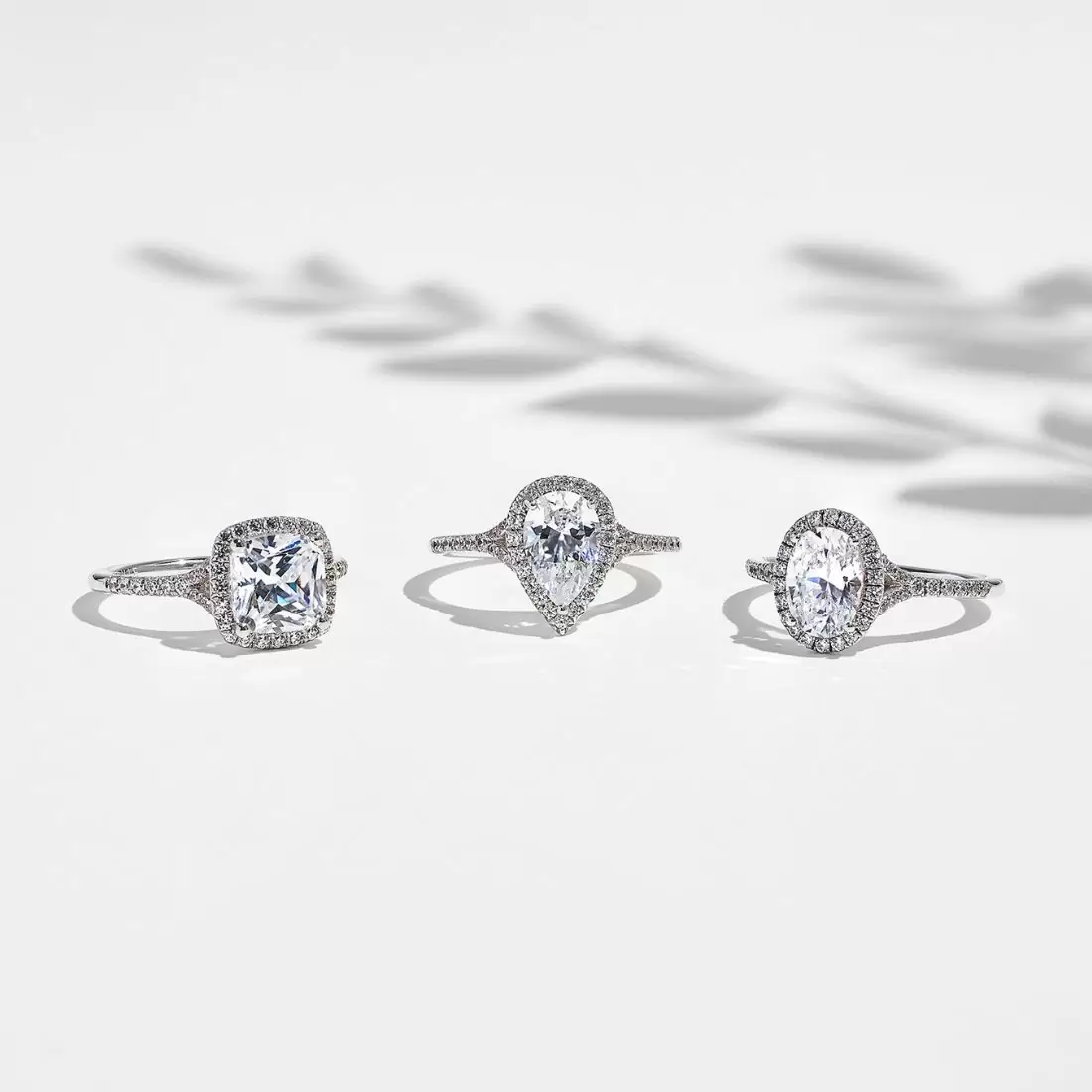
(from left to right) Cushion Cut Halo Engagement Ring – Alexandra, Pear Shaped Halo Engagement Ring – Alexandra, and Oval Cut Halo Engagement Ring – Alexandra
Saving Strategies and Smart Shopping
Navigating the complex world of engagement ring shopping requires an eye for detail and savvy financial strategies. Below are effective ways to ensure you’re getting the best value without compromising on the quality of your engagement ring.
Tips for Cutting Engagement Ring Costs Without Sacrificing Quality
Opt for a Slightly Lower Carat Size
Small reductions in carat size can significantly lower costs but often without a noticeable difference in appearance.
Choose an Alternative Gemstone
Consider less expensive gemstones or lab-grown diamonds, which can offer substantial savings.
Select a Less Expensive Setting
A simple yet elegant setting can reduce costs while still showcasing the beauty of the stone.
Shop Around for the Best Deals
Compare prices from multiple jewelers and consider online retailers who often offer competitive pricing due to lower overhead costs.
How to Compare Prices Effectively
Understand the 4Cs
To get a fair comparison, ensure you are comparing diamonds of similar carat, cut, clarity, and color.
Check for Certifications
Always compare stones certified by reputable labs, as this ensures you are getting the quality you pay for.
Review Warranties and Aftercare Services
Make sure the jeweler offers a solid warranty, which can be a significant advantage if you find a better deal elsewhere or if the ring doesn’t meet expectations upon arrival. Aftercare services such as free inspections or free cleanings are also important to consider when selecting your jeweler.
The Best Times of Year to Purchase Engagement Rings
Post-Holiday Sales
Take advantage of discounts offered after significant jewelry gifting holidays like Christmas and Valentine’s Day when jewelers want to reduce inventory.
Black Friday and Cyber Monday Deals
These are great times to snag deals on various ring styles, with some retailers offering substantial discounts.
End of Financial Year Sales
Many stores offer promotions to boost their annual sales figures, which can be a perfect time to purchase high-quality rings at a lower price.
Employing these strategies allows you to make smart choices that keep the cost down without diminishing the ring’s sentimental or aesthetic value.
Engagement Ring Budget Planning
Effective budget planning is crucial when navigating the financial waters of engagement and wedding preparations. Let’s break down how to set a realistic budget and manage engagement ring expenses within your overall wedding finances.
Setting a Realistic Ring Budget
Assess Your Financial Landscape
Review your current financial situation, including your savings, expenditures, and upcoming financial commitments. Talk openly with your partner about these things to manage expectations around the engagement ring spend.
Decide on a Spending Range
Decide on a comfortable range based on your finances. Remember, an engagement ring is a significant purchase but shouldn’t impair your financial stability.
Consider Future Financial Goals
Consider other expenses like weddings, honeymoons, or home purchases. This helps in balancing the ring’s cost with other life goals.
Financial Planning for Engagement and Wedding Rings
It’s worth creating a dedicated savings plan. If you’re planning ahead, consider setting aside a specific monthly amount for the ring purchase.
Alternatively, you can explore financial options offered by your jeweler to help you spread the cost over time. Ensure these plans are sensible and don’t carry high interest rates that can inflate costs.
How Engagement Ring Costs Fit into Overall Wedding Budgeting
Allocate Your Budget Wisely
Experts often suggest allocating a certain percentage of your total wedding budget to the ring. This can vary but typically ranges from 3% to 5%.
Stay Flexible
As with all aspects of wedding planning, unexpected costs can arise. Keeping a flexible approach to your budget can help accommodate these surprises without stress.
Planning your engagement ring purchase within a broader financial context ensures you enjoy this exciting purchase without compromising your financial health. By understanding and integrating these costs into your overall wedding budget, you can prioritize what’s most important and make informed decisions that align with both your financial and romantic aspirations.
Market Trends and Their Impact
Various trends can influence the dynamics of the engagement ring market. Researching these trends will gain you valuable insights into why engagement ring prices fluctuate.
Trends in the Diamond Industry and Pricing
Supply and Demand Shifts
Changes in diamond mining output or the discovery of new diamond sources can dramatically affect prices. Similarly, economic downturns typically reduce demand and can lead to lower prices.
Innovation in Diamond Alternatives
The rise of lab-grown diamonds and other alternatives has begun diversifying the market and adjusting pricing structures, often offering more budget-friendly options.
Engagement Ring Cost Trends: Past, Present, and Future
The cost of engagement rings has increased gradually over the decades, influenced by inflation, changing economic conditions, and evolving consumer tastes.
Current trends suggest a growing interest in sustainability and ethical sourcing, which might lead to increased demand and higher prices for ethically sourced or eco-friendly rings.
By staying informed about these market trends, consumers can better navigate their engagement ring purchases, making choices that align with both their personal values and financial realities.
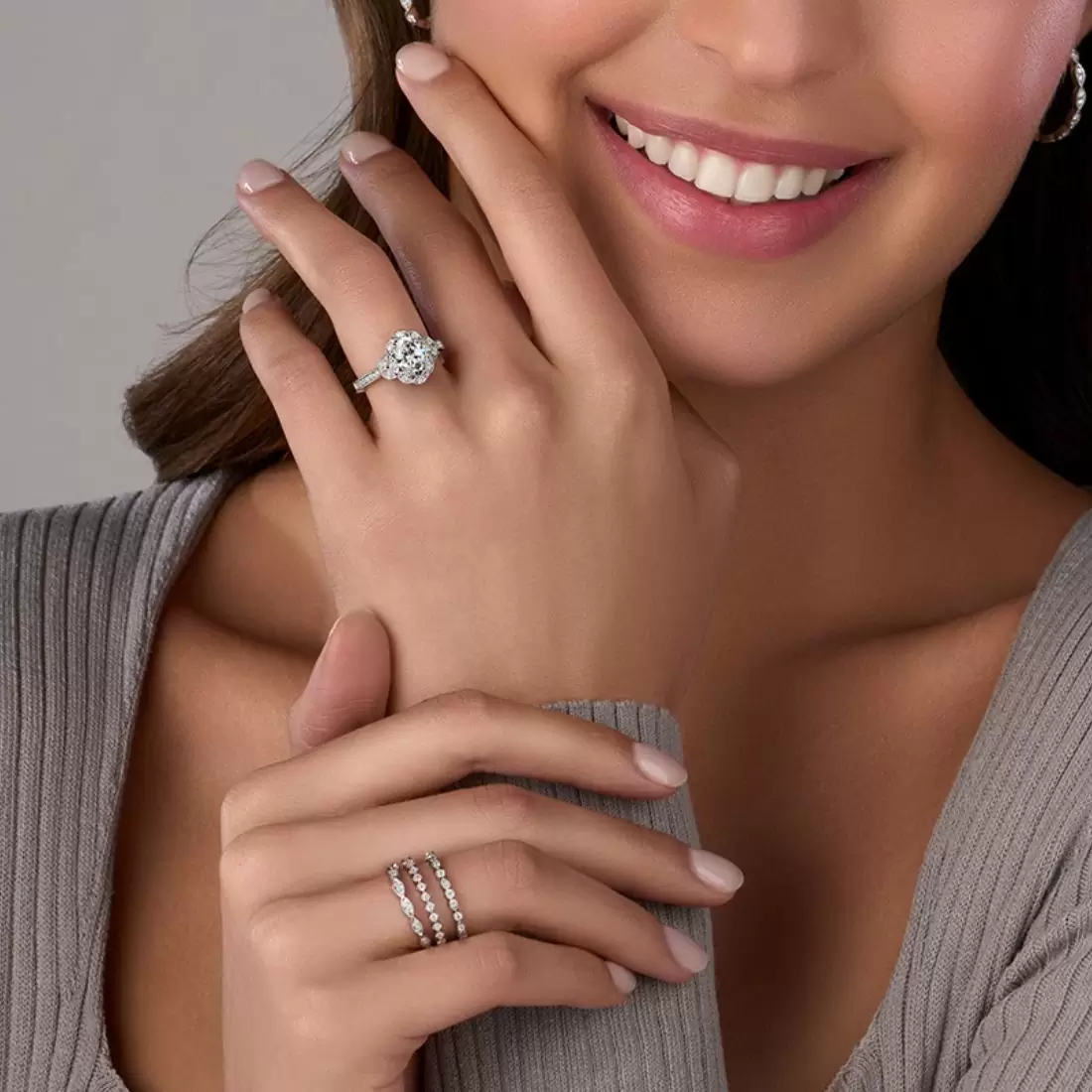
(from top to bottom) Flower Engagement Ring – Jori, Diamond Stackable Wedding Band – Madeleina, Modern Diamond Stackable Band – Laurel, and Delicate Stackable Wedding Band – Eugenie
Cultural and Social Considerations
Engagement rings are more than a symbol of love and commitment, they also carry significant cultural and social expectations that can influence their cost.
Societal Expectations and Their Financial Implications
Pressure to Conform
Social pressures can significantly impact engagement ring choices. The desire to meet or exceed the perceived standards set by friends, family, or social media can drive couples to spend more than they might otherwise consider prudent. Communicate openly with your partner about their expectations and this will help set the standard among your peers.
Evolving Norms
There is a growing trend towards more personalized and less traditional ring choices, which can sometimes mean more affordable options are becoming more socially acceptable.
How Much Are Other Couples Spending?
Research shows considerable variation in what couples spend on engagement rings. Factors such as geographic location, cultural background, and economic climate all play significant roles in these differences.
While some couples opt for luxury and high expense, others prioritize value and sentiment over price, reflecting a shift towards more personalized engagement experiences.
Avoid comparing the cost to what others are doing; your ring purchase should be based on your values and financial situation instead of conforming to external expectations.
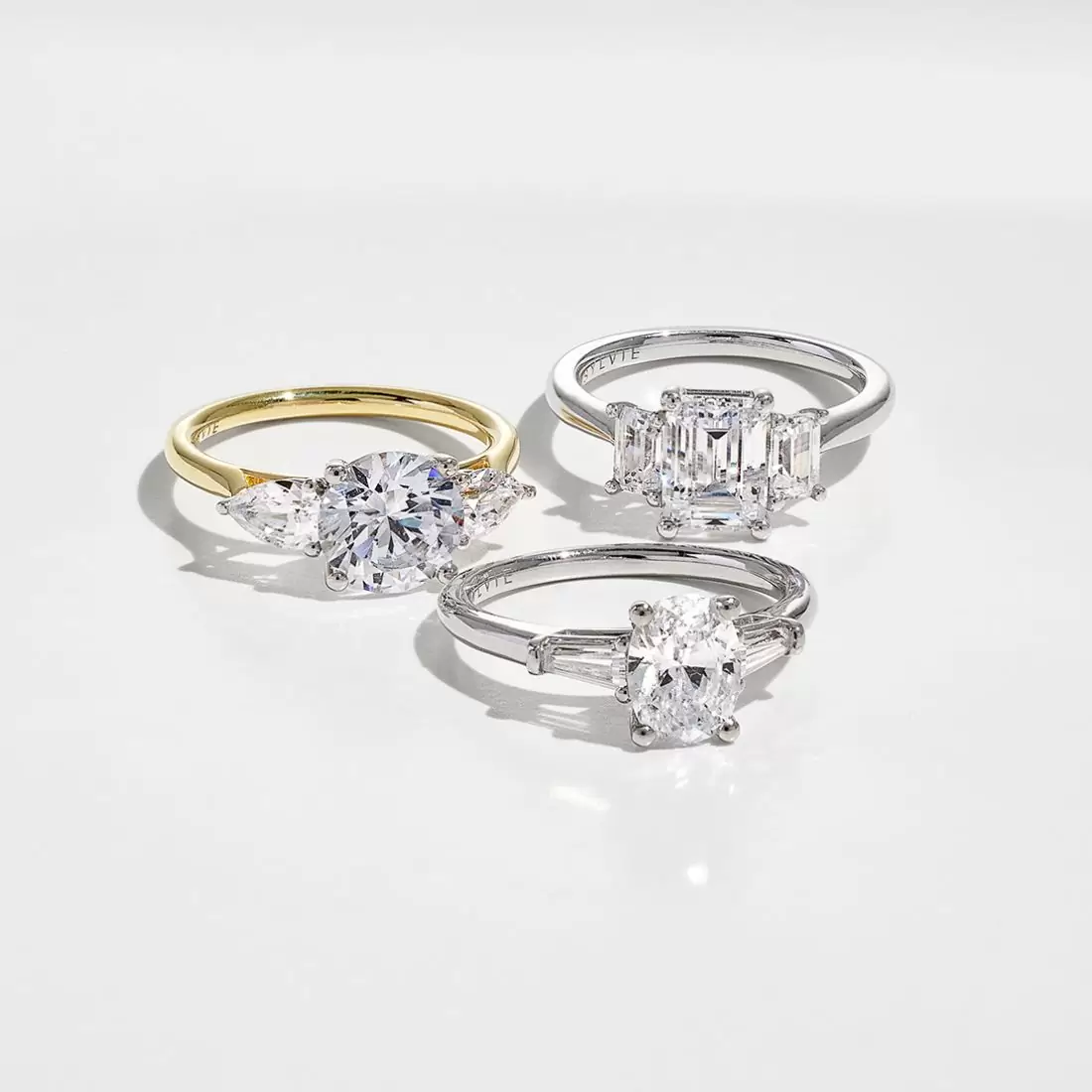
(from left to right) Round Cut Three Stone Engagement Ring – Martine, Oval Cut Three Stone Engagement Ring With Baguettes – Nicolette, and Three Stone Engagement Ring – Gigi
Long-term Considerations
When purchasing an engagement ring, consider the long-term implications of your choice beyond the immediate financial impact.
The Resale Value of Engagement Rings
While not all engagement rings retain or increase in value, certain things like rarity, brand, and design can enhance resale potential. Understanding the market and choosing wisely can sometimes turn an engagement ring into a financial asset.
The resale value can also be influenced by the diamond’s quality and current market demands, which fluctuate over time.
Maintaining and Insuring Your Engagement Ring
Proper care, including regular cleanings and check-ups, is essential to maintaining the ring’s aesthetic and structural integrity. It’s well worth insuring your engagement ring to protect against loss, theft, or damage and ultimately ensure that your financial investment is secured.
The True Value of an Engagement Ring Beyond Cost
Beyond its market price, an engagement ring holds immense emotional and symbolic value, representing a commitment and a shared future. The sentimental value of such a personal and intimate gift far outweighs its financial cost, making it priceless to the couple.
Conclusion
Throughout this guide, we’ve explored the multifaceted aspects of understanding the cost of engagement rings, from initial pricing and factors influencing costs to the long-term considerations of owning a ring. While navigating these expenses, it’s vital to balance practical financial considerations with personal preferences and the symbolic importance of this enduring symbol of love. Choosing your perfect ring that fits your budget and resonates with your style, whether it’s a classic solitaire or a modern or unique setting, will symbolize your commitment and feel right for you.
